 the son of Herbert Charles and Lilian Brotheridge. Herbert was educated at Smethwick Technical College and played football for the Aston Villa Colts
the son of Herbert Charles and Lilian Brotheridge. Herbert was educated at Smethwick Technical College and played football for the Aston Villa Colts  and cricket for Mitchells and Butlers, Smethwick. Herbert became an inspector of weights and measures with Aylesbury Borough Council. He married Margaret Plant on 30-08-1940 who was eight months pregnant when he left for Normandy. His daughter Margaret Brotheridge was born two weeks after he was killed. He was a British Army officer and was the first Allied soldier to be killed in action on D-Day, 6 June 1944, during Operation Tonga.
and cricket for Mitchells and Butlers, Smethwick. Herbert became an inspector of weights and measures with Aylesbury Borough Council. He married Margaret Plant on 30-08-1940 who was eight months pregnant when he left for Normandy. His daughter Margaret Brotheridge was born two weeks after he was killed. He was a British Army officer and was the first Allied soldier to be killed in action on D-Day, 6 June 1944, during Operation Tonga.  Operation Tonga was the codename given to the airborne operation undertaken by the British 6th Airborne Division between 5 June and 7 June 1944 as a part of Operation Overlord and the D-Day landings. Brotheridge was commissioned into the Oxfordshire and Buckinghamshire Light Infantry
Operation Tonga was the codename given to the airborne operation undertaken by the British 6th Airborne Division between 5 June and 7 June 1944 as a part of Operation Overlord and the D-Day landings. Brotheridge was commissioned into the Oxfordshire and Buckinghamshire Light Infantry  in July 1942. Brotheridge first met Major Reginal John Howard
in July 1942. Brotheridge first met Major Reginal John Howard  at Slade Barracks, Oxford and Howard was to recommend him, whilst he was a corporal, to join the OCTU. John Howard died on 05-05-1999, at the age of 86. The new Memorial Pegasus museum was opened by the Prince of Wales on 04-06-2000. In 2006, his daughter, Penny, published Howard’s private papers, titled Pegasus Diaries
at Slade Barracks, Oxford and Howard was to recommend him, whilst he was a corporal, to join the OCTU. John Howard died on 05-05-1999, at the age of 86. The new Memorial Pegasus museum was opened by the Prince of Wales on 04-06-2000. In 2006, his daughter, Penny, published Howard’s private papers, titled Pegasus Diaries 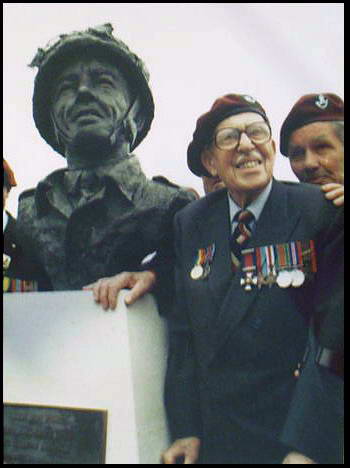

 Later at a conference in Bournemouth he advised Howard, who was seeking to recruit him as a platoon commander, that he would join D Company, following completion of his OCTU training. They both had a similar social background and a keen interest in sports. It was expected that Brotheridge would pursue a career as a professional footballer following the war. They had both served in the ranks and Howard considered him to be a friend. Brotheridge did not initially enjoy an easy relationship with his fellow platoon leaders who all came from a different social background to himself. He was popular with the members of his platoon. The Orne Canal Bridge or what we call “Pegasus Bridge”
Later at a conference in Bournemouth he advised Howard, who was seeking to recruit him as a platoon commander, that he would join D Company, following completion of his OCTU training. They both had a similar social background and a keen interest in sports. It was expected that Brotheridge would pursue a career as a professional footballer following the war. They had both served in the ranks and Howard considered him to be a friend. Brotheridge did not initially enjoy an easy relationship with his fellow platoon leaders who all came from a different social background to himself. He was popular with the members of his platoon. The Orne Canal Bridge or what we call “Pegasus Bridge”  today was captured by the Oxford and Bucks Light Infantry of the 2nd Battalion, nicknamed “Immaculate Second of the 6th Airborne Division
today was captured by the Oxford and Bucks Light Infantry of the 2nd Battalion, nicknamed “Immaculate Second of the 6th Airborne Division 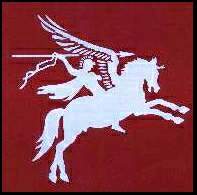 Brotheridge was chosen to command 25 Platoon, also known as first platoon, in Major John Howard’s ‘D’ Company, 2nd Oxfordshire and Buckinghamshire Light Infantry, 6th Airlanding Brigade, 6th Airborne Division. The original plan was for Lieutenant David James Wood
Brotheridge was chosen to command 25 Platoon, also known as first platoon, in Major John Howard’s ‘D’ Company, 2nd Oxfordshire and Buckinghamshire Light Infantry, 6th Airlanding Brigade, 6th Airborne Division. The original plan was for Lieutenant David James Wood  to lead the first platoon across the Caen canal bridge, Wood survived the rough landing and the short firefight before Pegausu Bridge was captured. But just minutes later, he was shot in the leg with three 9mm rounds.
to lead the first platoon across the Caen canal bridge, Wood survived the rough landing and the short firefight before Pegausu Bridge was captured. But just minutes later, he was shot in the leg with three 9mm rounds.
However shortly before D-Day Howard changed the order of landing and Brotheridge was selected to lead the first platoon across the bridge at Benouville. The coup-de-main glider borne platoons left RAF Tarrant Rushton, Dorset  at 22.40 hrs on 05-06-1944 on a moonlit night; crossing the English coast over Worthing, Sussex. Brotheridge’s platoon’s glider piloted by Staff Sergeant Jim Wallwork
at 22.40 hrs on 05-06-1944 on a moonlit night; crossing the English coast over Worthing, Sussex. Brotheridge’s platoon’s glider piloted by Staff Sergeant Jim Wallwork

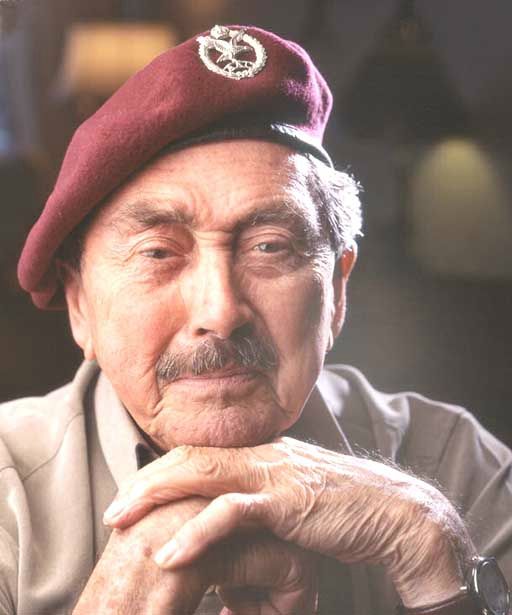
 landed in Normandy at 00.16 hrs on 6 June: landing less than 50 feet from the water tower of the Benouville Bridge
landed in Normandy at 00.16 hrs on 6 June: landing less than 50 feet from the water tower of the Benouville Bridge  and Brotheridge led the first charge across the bridge, now known as Pegasus Bridge. Jim Wallwork would die very old age of 93, on 24-01-2013, in White Rock, Canada. Brotheridge managed to silence the left German MP-post at the western bank of the Caen Canal; he and his platoon then came under attack by Spandau machine gun fire from the direction of the Gondree Cafe
and Brotheridge led the first charge across the bridge, now known as Pegasus Bridge. Jim Wallwork would die very old age of 93, on 24-01-2013, in White Rock, Canada. Brotheridge managed to silence the left German MP-post at the western bank of the Caen Canal; he and his platoon then came under attack by Spandau machine gun fire from the direction of the Gondree Cafe
 on the far side of the canal.
on the far side of the canal.  Major John Howard and Lieutenant David Wood in the company of Georges Gondrée, enjoying their return to the café in 1946.
Major John Howard and Lieutenant David Wood in the company of Georges Gondrée, enjoying their return to the café in 1946. (23-02-1923 and who died age 86 on 12-03-2009) was the last surviving officer of the coup de main operation carried out by glider borne troops of the 2nd Oxfordshire and Buckinghamshire Light Infantry (the 52nd), on D Day, 6 June 1944, tasked with capturing Pegasus Bridge and Horsa Bridge
(23-02-1923 and who died age 86 on 12-03-2009) was the last surviving officer of the coup de main operation carried out by glider borne troops of the 2nd Oxfordshire and Buckinghamshire Light Infantry (the 52nd), on D Day, 6 June 1944, tasked with capturing Pegasus Bridge and Horsa BridgeRoberts,
 Brigadier David Madrylle Stileman
Brigadier David Madrylle Stileman  on the right with German officer Hans von Luck
on the right with German officer Hans von Luck  , Major John Howard and Oberst Hans–Ulrich Freiherr von Luck
, Major John Howard and Oberst Hans–Ulrich Freiherr von Luck  und Witten von, an German officer with the 21st Panzer Division.
und Witten von, an German officer with the 21st Panzer Division.  Because the owners were still severely anti-German, Howard covered for Luck by passing him off as Swedish. The Café Gondrée still serves as a café, though it is now known as the Pegasus Bridge Café. On 05-06-1987 it was listed as an Historical Monument. Brigadier David Stileman OBE,
Because the owners were still severely anti-German, Howard covered for Luck by passing him off as Swedish. The Café Gondrée still serves as a café, though it is now known as the Pegasus Bridge Café. On 05-06-1987 it was listed as an Historical Monument. Brigadier David Stileman OBE, of the 4th/7th Royal Dragoon Guards,
of the 4th/7th Royal Dragoon Guards,  and Major John Howard of the British 6th Airborne Division. He also formed a friendship with popular historian Stephen Ambrose,
and Major John Howard of the British 6th Airborne Division. He also formed a friendship with popular historian Stephen Ambrose,  who encouraged him to write his memoirs, which was titled Panzer Commander.
who encouraged him to write his memoirs, which was titled Panzer Commander.  Hans von Luck died in Hamburg on 01-08-1997 at the age of 86. Alastair McLeod Morrison survived the war and died on 02-04-2007 at the age of 83. In 1957, he married Diana Griffith-Griffin, who survives him with their son and two daughters.
Hans von Luck died in Hamburg on 01-08-1997 at the age of 86. Alastair McLeod Morrison survived the war and died on 02-04-2007 at the age of 83. In 1957, he married Diana Griffith-Griffin, who survives him with their son and two daughters. and D-Day
and D-Day  on which the television series of the same name is based. In Band of Brothers, Stephen E. Ambrose pays tribute to the men of Easy Company, 2nd Battalion, 506th Parachute Infantry Regimen,
on which the television series of the same name is based. In Band of Brothers, Stephen E. Ambrose pays tribute to the men of Easy Company, 2nd Battalion, 506th Parachute Infantry Regimen,  a crack rifle company of the 101 Airborne Division. “Screaming Eagles”
a crack rifle company of the 101 Airborne Division. “Screaming Eagles”  From their rigorous training in Georgia in 1942 to the dangerous parachute landings on D-Day and their triumphant capture of Hitler’s ‘Eagle’s Nest’ in Berchtesgaden
From their rigorous training in Georgia in 1942 to the dangerous parachute landings on D-Day and their triumphant capture of Hitler’s ‘Eagle’s Nest’ in Berchtesgaden 
 . under command of Major Richard Davis “Dick” Winters
. under command of Major Richard Davis “Dick” Winters  Ambrose tells the story of this remarkable company. Repeatedly send on the toughest missions, these brave men fought, went hungry, froze and died in the service of their country.
Ambrose tells the story of this remarkable company. Repeatedly send on the toughest missions, these brave men fought, went hungry, froze and died in the service of their country. took care of him. Lieutenant Herbert Denham “Den” Brotheridge is buried in the War Cemetery in Ranville Churchyard, near Caen, in France. Ranville was the first village in France to be liberated. He received a mention in dispatches for this action. He had been granted an immediate award of the Military Cross by Field Marshal Bernard Montgomery
took care of him. Lieutenant Herbert Denham “Den” Brotheridge is buried in the War Cemetery in Ranville Churchyard, near Caen, in France. Ranville was the first village in France to be liberated. He received a mention in dispatches for this action. He had been granted an immediate award of the Military Cross by Field Marshal Bernard Montgomery 
 the C-in-C of 21st Army Group
the C-in-C of 21st Army Group  on 16-06-1944, however regulations for the award of the MC at that time prevented confirmation of the award by King George VI
on 16-06-1944, however regulations for the award of the MC at that time prevented confirmation of the award by King George VI 
 as the Citation had not been initiated until after Brotheridge’s death. Note that some purists modify this death to be the first death on D-Day, because another soldier in the attack, of No 14 platoon, 2nd Ox and Bucks, Lance-Corporal Fred Greenhalgh
as the Citation had not been initiated until after Brotheridge’s death. Note that some purists modify this death to be the first death on D-Day, because another soldier in the attack, of No 14 platoon, 2nd Ox and Bucks, Lance-Corporal Fred Greenhalgh  , was knocked unconscious following the crash landing and thrown out of his glider and died by drowning..
, was knocked unconscious following the crash landing and thrown out of his glider and died by drowning..Death and burial ground of Brotheridge, Herbert Denham “Den “.


 Major John Howard’s D Company 2nd Ox and Bucks was the first Allied unit to land in Normandy on D-Day, 6 June 1944 and Brotheridge was the first soldier from the glider borne 2nd Ox and Bucks coup de main operation to be killed in action. Brotheridge was the first man to be wounded in action during the Normandy landings and is widely recognised as being the first Allied soldier to be killed in action on D-Day, 6 June 1944. The man who followed Broderidge some further, the later actor and captain with the Ox and Bucks on the Pegasus bridge, Richard Todd
Major John Howard’s D Company 2nd Ox and Bucks was the first Allied unit to land in Normandy on D-Day, 6 June 1944 and Brotheridge was the first soldier from the glider borne 2nd Ox and Bucks coup de main operation to be killed in action. Brotheridge was the first man to be wounded in action during the Normandy landings and is widely recognised as being the first Allied soldier to be killed in action on D-Day, 6 June 1944. The man who followed Broderidge some further, the later actor and captain with the Ox and Bucks on the Pegasus bridge, Richard Todd

 survived the war and was ninety as he died. A memorial plaque to commemorate the events of Den Brotheridge’s death was unveiled at Smethwick Council House on 02-04-1995 by his daughter, Margaret Brotheridge.
survived the war and was ninety as he died. A memorial plaque to commemorate the events of Den Brotheridge’s death was unveiled at Smethwick Council House on 02-04-1995 by his daughter, Margaret Brotheridge.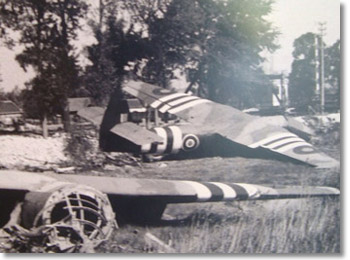

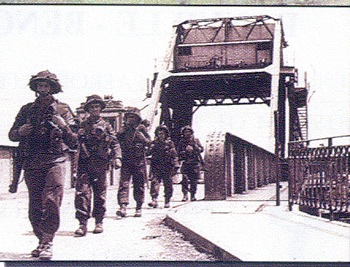 Emile Corteil and his dog Glenn are buried on Ranville War Cemetery. Of the 2,236 Commonwealth slaughterers (nearly 90 were not identified) there were 2,065 Britons, 76 Canadians, 3 Nieuw-Zeelanders and 2 Australians. He also leagues 323 Germans, 5 fringes, 1 pool and 1 Belgian.
Emile Corteil and his dog Glenn are buried on Ranville War Cemetery. Of the 2,236 Commonwealth slaughterers (nearly 90 were not identified) there were 2,065 Britons, 76 Canadians, 3 Nieuw-Zeelanders and 2 Australians. He also leagues 323 Germans, 5 fringes, 1 pool and 1 Belgian.

 are two brothers and lieutenants in the 1st Canadian Parachute Battalion. They fell on June 7 and September 20, 1944 respectively and were buried next to each other.
are two brothers and lieutenants in the 1st Canadian Parachute Battalion. They fell on June 7 and September 20, 1944 respectively and were buried next to each other.





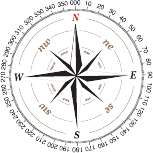




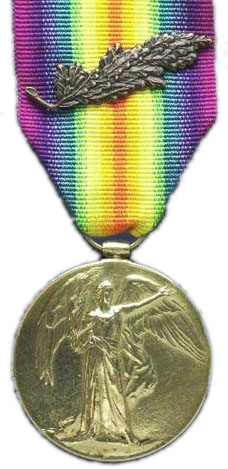












Leave a Reply